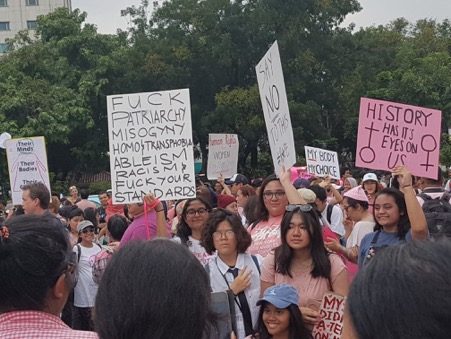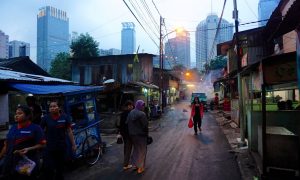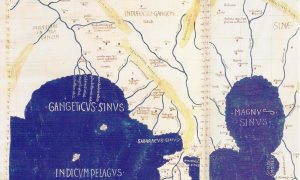“Does queer theory work in Southeast Asia?”
This is a question often directed to those of us working on LGBTQ+ issues in the region. In this article I explore the applicability of queer theory beyond its perceived geographical and cultural origins in the United States. Writing from the Indonesian context, I argue that queer theory is a useful tool in Southeast Asia. It helps us to be more critical in reading mainstream LGBTQ+ discourses in media and popular culture. Mainstream reports of LGBTQ+ issues and progresses in internet and media are often only partial. By placing a greater emphasis on LGBTQ+ developments, such as the legalisation of same-sex marriage, such reports obscure the complex dynamics and relationships between LGBTQ+ issues with other issues, such as race and class. The notion of equality is reduced to narratives of sexual and gender identity and does not further ask: which segments of LGBTQ+ people are really getting benefits from such progress? Remember, LGBTQ+ communities are not monolithic, but racially and socially diverse. But, in media portrayals of these issues, the inequalities and social costs stemming from this diversity is obscured by public euphoria in the name of what we often call “progress”. To understand this phenomenon we must turn to tools offered by queer theory.
Queer theory in ‘Asia’: a brief introduction
People often understand queer theory to be merely about gender and sexuality. It isn’t. Rather, it is a mode of critique and analysis to uncover how issues of gender and sexuality connect with, influence, and overlap with other issues. A big gap in this field is the question of the lives of queer theories outside of the American contexts. This is an important inquiry, considering that as academic texts and debates move across geographical-cultural domains, so too does queer theory.
Queer theory has to some extent enjoyed an appeal outside the “Western” world, which in turn has fostered non-U.S. scholars to reconfigure queer theory in their own localities. For instance, the “Queer Asia” series published by the University of Hongkong Press is an attempt to foster queer intellectual paths that carefully take into account specificities of socio-cultural and politics in Asian countries. Seemingly, there are importable qualities of queer theory as an analytical framework that can go beyond its American contexts, where it started off from. In Queer Bangkok (2011), Peter Jackson adopts and refers the term “queer” as “a critical theoretical stance that analyses all genderings and sexualities as emerging from contingent historical conditions”[i], although the term as such is not used in Thailand’s LGBTQ+ communities. Similarly, in her edited collection, Queer Singapore (2012), Audrey Yue also uses the term “queer”, despite its infrequent usage in Singapore’s LGBTQ+ communities and activists, as “a critical tool to unsettle heteronormativity”[ii]. What the practices from the above scholars points to is the power of “queer” as a scholarly method and analytical framework that unsettle the essentialised notion of sexuality and subsequently unpack its contingency on historical and socio-cultural conditions.
However, even though it seems to have developed in non-Western contexts, non-American queer theory does not enjoy the same degree of prominence and influence as its American counterpart. Observing this tendency, Jasbir K. Puar eloquently argues that too non-American queer theory is often not legitimately counted as part of the queer canon because the analysis and data from the Global South (including Southeast Asia) are only modifying the dominant American queer narratives, which is somewhat ironically called the “global”[iii]. American queer theory has problematically “gone global”. A number of works under the banner of queer theory have been widely cited, globalised, and canonised, like, among others, Judith Butler’s notion of gender performativity and Eve K. Sedgwick’s Epistemology of the Closet.
Getting more personal
Once, a prominent gay scholar in Australia expressed his concern to me when he recognised my “addiction” to American queer theory texts, as it would only reproduce their dominance, reinforce its applicability into different contexts, and hence inadvertently legitimise its “superior” status. This is indeed a valid concern, as knowledge production and adoption are always political. But, do we just need to simply dismiss American queer theory entirely for its insularity and parochialism? Or are there any other ways to look at it differently?
In this interconnected world, encounters with different ideas are inevitable. In other words, we are not living in silos; every encounter is loaded with unexpected possibilities. What kind of possibilities and politics could emerge from my encounter with U.S. queer theory, especially from the position of margin that I and other non-American scholars and activists occupy?
I think that one answer is “portability”. Rather than coalescing our critiques and attention around its “universality”, “portability” refers to the ability of knowledge to move across borders, and its applicability because it serves a specific function. In transit, American queer theory can leave information about and from the “origins” that might equip us with a more complex knowledge about other places. This becomes politically important, given the fact that the circulation of LGBTQ+ discourses, reports, and imageries in media often create a superficial perception that some countries are queer paradise, just because they make same-sex marriage legal or enact anti-discrimination law.
I find queer theory is useful with its function to see beyond what is reported and captured in media. The notion of “homonationalism” from Jasbir Puar, for example, highlights that the inclusion of LGBTQ+ subjects into American nationalism has fostered racist, xenophobic, and anti-immigrant views, in which (white) LGBTQ+ rights should be protected from supposedly “homophobic” individuals coming from different races, religious backgrounds, and national origins. See also other examples in the endnote here[iv].
The case of Indonesia
From Indonesia where I have been writing, fragmented images and reports of queer progress in media, if uncritically examined, might produce an Orientalist view: Non-West is reduced to being backward and primitive, while the West is at the peak of the human civilisation. What happens behind such reports of “LGBTQ+ progress” is complex. We do not inhabit a single identity. As such, through the idea of “portability”, I use American queer theory mostly to critically evaluate images and reports queerness in media.
In 2016, when state officials and conservative groups all spoke out publicly and negatively about “LGBT” (In Indonesia the term “LGBT” is more commonly used than LGBTQ+) issues, which were framed as a threat to the national identity. LGBTQ+ individuals and activists were accused of importing same-sex marriage to Indonesia, as marriage equality has become the dominant narrative of “queer progress” portrayed in media. Queer politics is more diverse than just marriage (something discussed in queer theory). I then imagined other forms of acceptance and framed the local queer activism in a different way, rather than using the language of marriage rights.
Subsequently, I also questioned the accusation of “Westernised identity” that the Indonesian anti-LGBT groups associated with “LGBT” identity. What do they refer to as the West? Which countries? The “West” is also not monolithic and uniform. Queer theory, as a framework, teaches me to be “suspicious” with any constructs, including sexual and gender identities. As they are historically-contingent, I could then see how the term “LGBT” is a product of history, only from the late 1990s and the early 2000s, such acronym has been used in America to consolidate the movements in response to opposition from religious conservatives. For this reason, Indonesian scholars and activists could theorise and envision different sexual and gender experience or identities beyond the neat model of “LGBT”. For this reason, with the critical perspective from queer theory, we in Indonesia could begin to find other forms of politics, borrowing Jose Esteban Munoz’s words, that are “not-yet-here”, or “already-here, but not yet discovered”.
[i] Jackson, “Queer Bangkok after the Millennium: Beyond Twentieth-Century Paradigms”, 3.
[ii] Yue, “Queer Singapore: A Critical Introduction”, 4.
[iii] Puar, Terrorist Assemblages, 226.
[iv] For example what Time Magazine referred to as “The Transgender Tipping Point” in 2014 does not necessarily translate into the total inclusion of transgender people, as transgender people of colour have been increasingly brutally murdered.
Dean Spade’s Normal Life (2015) sees the limits of legal changes (i.e. anti-discrimination and hate crime laws) on transgender people, because it does not take into account how state violence is often directed to the most vulnerable transgender people, who are considered “criminal”/ not eligible to legally live in America, because they have engaged one time in prostitution. So, there is more than just formal equality.
Lately, Libby Adler, in Gay Priori (2018), also critically points out that while hate crime legislation and the repeal of Don’t Ask Don’t Tell might increase protection and acceptance, such move do not significantly help the redistribution of benefit to LGBTIQ + individuals who are overrepresented among the homeless and poor (Adler, Gay Priori, 2). Race, sexuality, gender, class, dis/ability, and migration status crisscross, and produce different level of vulnerabilities.
 Facebook
Facebook  Twitter
Twitter  Soundcloud
Soundcloud  Youtube
Youtube  Rss
Rss 


